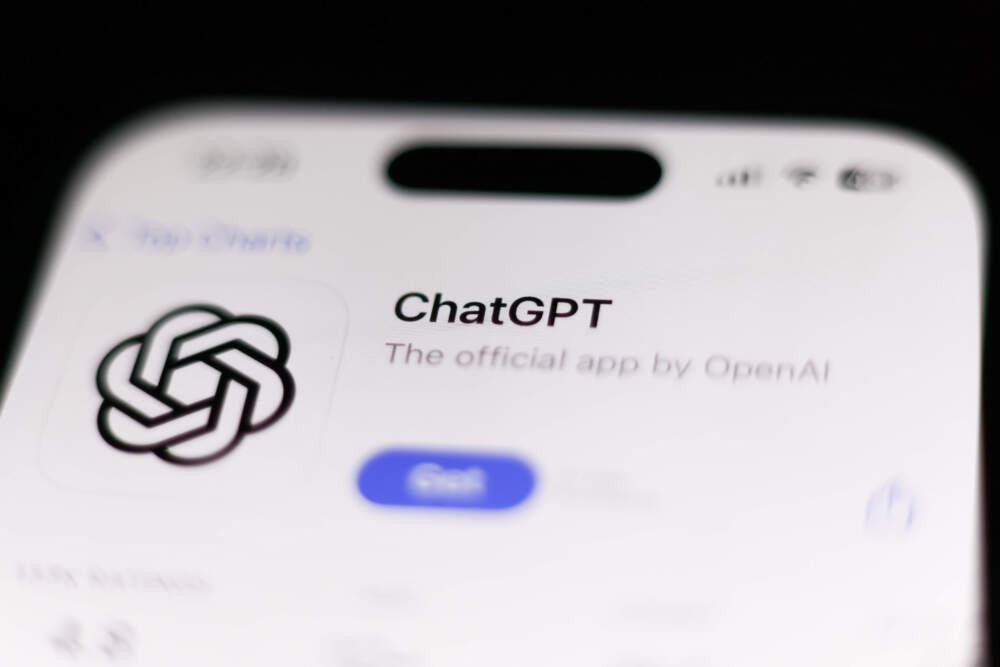Editor’s Note: This is an excerpt from WBUR’s weekly health newsletter, CommonHealth. If you like what you read and want it in your inbox, sign up here.
With schools back in session, many teachers, students and their parents are grappling with how — and whether — to use artificial intelligence in the classroom.
For most of us, AI tools are already part of our lives in all sorts of ways. They power search engines, operate on cell phones and pop up on many of the apps we use daily. What’s less clear is how this powerful technology is affecting our brains.
The question may be especially relevant in academics, where learning and brain development are among the primary goals.
A study out of the Massachusetts Institute of Technology makes an early attempt to shed light on this question. Spoiler alert: The preliminary results may make you think twice about using ChatGPT as a homework helper.
The experiment
The study, which was submitted for publication in June but has not yet been peer reviewed, asked 54 Boston-area college students to write essays. For the prompts, researchers used topics taken from SAT tests. The participants were divided into three groups. One could use ChatGPT to craft their papers, another could use the internet search engine Google. Students in the third group had neither.
“We called them the brain-only group in the paper,” said Nataliya Kosmyna, a research scientist with MIT’s Media Lab who led the study. “Meaning that they actually couldn’t use any other tools.”
Kosmyna and her team monitored students’ brain activity while they completed the tasks. They measured “neural connectivity,” which refers to levels of communication between different parts of the brain.
“Which area of the brain talks to which area of the brain, and how much talking is happening,” Kosmyna explained. “Did we just say, ‘Hi’ to each other, or did we actually talk further?”
The findings
The researchers concluded that the people who received AI assistance showed less brain activity than those who did the work on their own — aka the old fashioned way.
Kosmyna’s team found that both the amount and the quality of brain connections decreased the more students relied on technology. The group also found differences in the quality of the essays the participants produced. They asked two English teachers to help score the work.
The students who used ChatGPT, “generated actually very homogenous essays,” Kosmyna told WBUR. (She went into more detail on this and other findings in an interview with WBUR’s On Point)
Kosmyna cautions the study shouldn’t be viewed as a measure of smarts or intelligence on the part of the students using high-tech help.
“This doesn’t mean that they were stupid or there was some brain rot or brain damage,” she said. “It’s really just, again, how much data flow was happening” inside their brains.
A twist
After the first stage of the study, a smaller sample of just 18 students returned and were asked to rewrite their essays. This time, Kosmyna had them switch tools, which resulted in an interesting finding.
The students who had previously used ChatGPT did not have access to the AI tool for the second round of writing. But they showed less brain activity than the original, brain-only group in the larger study, Kosmyna said.
Even more intriguing, the students who started the experiment using only their brains, and were subsequently granted access to ChatGPT, showed strong brain activity even when they had the AI help.
Kosmyna says that begs the question: “ Does the timing potentially matter when you introduce tools like ChatGPT in the educational setting?”
Kosmyna points out it makes sense that students’ brains didn’t have to work as hard when they used ChatGPT to write their essays
“It’s supposed to help you, right?” said Kosmyna. “It’s a tool.”
But the study suggests there are cognitive tradeoffs to deploying that tool. Our brains love shortcuts, but they’re not always the most effective learning tools. Kosmyna theorizes the effect may also stem from chatbots’ tendency to filter out conflicting evidence and reinforce users’ beliefs.
“You actually do need to have some challenge, some significant amount of challenge in learning, because you will learn more,” said Kosmyna.
She plans to conduct expanded studies with younger students and adults, which she hopes to begin this year. Since publishing the preliminary findings online, Kosmyna says she’s fielded thousands of emails — including from concerned and confused students.
Her advice to them: Be mindful about how you use AI tools. When you’re tempted to open ChatGPT, consider whether you really need it or are just seeking a shortcut. She also reminds students to cherish classroom time, as well as in-person connections with classmates and teachers for the exchange of ideas and mentorship.
“This is all precious,” Kosmyna said. “You have your whole life to sit in front of a computer.”

